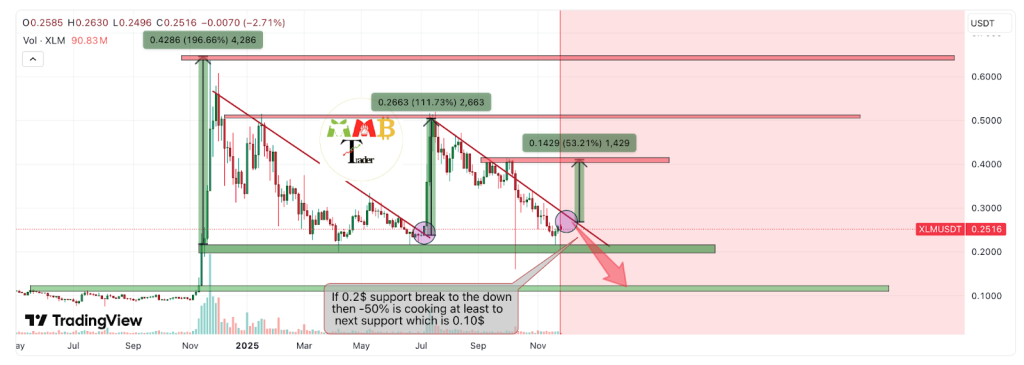Ethereum ETF Inflows Signal Institutional Capital Reallocation: A New Era for Digital Asset Investing
- Institutional capital shifted to Ethereum ETFs in 2025, with $9.4B net inflows vs. Bitcoin's $552M, driven by yield generation and regulatory clarity. - Ethereum's proof-of-stake model, 3-6% staking yields, and Dencun upgrades enabled $223B DeFi TVL, outpacing Bitcoin's utility limitations. - 19+ firms reclassified ETH as strategic assets, staking 4.1M ETH ($17.6B) to create self-sustaining price cycles through supply deflation and whale accumulation. - CLARITY/GENIUS Acts and SEC-friendly staking framew
In 2025, a seismic shift is reshaping the institutional digital asset landscape. Ethereum ETFs have not only outpaced Bitcoin in inflows but have also redefined how capital is allocated in a macroeconomic environment where yield generation and regulatory clarity are paramount. This reallocation reflects a deeper structural transition: institutions are prioritizing utility-driven assets over speculative ones, and Ethereum's proof-of-stake model, regulatory tailwinds, and infrastructure innovation are fueling this transformation.
Institutional Rotation: From Bitcoin to Ethereum
The data is unequivocal. Ethereum ETFs attracted $9.4 billion in net inflows during Q2 2025, dwarfing Bitcoin's paltry $552 million. By mid-2025, institutional giants like BlackRock (ETHA), Fidelity (FETH), and Grayscale (ETHE) had collectively captured $1.35 billion in Ethereum exposure. These products leverage in-kind creation and redemption mechanisms, reducing friction for large-scale capital deployment. In Q3, Ethereum ETF inflows surged to $443.9 million—more than double Bitcoin's $219 million—marking a clear institutional pivot.
This rotation is not merely a short-term trend. Over 19 publicly traded companies, including SharpLink Gaming and BitMine Immersion Technologies, have reclassified Ethereum as a strategic asset. SharpLink Gaming, for instance, staked 215,634 ETH to diversify revenue streams, while BitMine Immersion Technologies absorbed selling pressure by accumulating and staking large ETH quantities. By July 2025, institutional entities had staked 4.1 million ETH ($17.6 billion in value), a 3.8% increase in Ethereum's circulating supply. This flywheel effect—where staking demand boosts ETH's price, which in turn incentivizes further holding—has created a self-sustaining cycle.
Yield Dynamics: Ethereum's Capital Efficiency Edge
In a low-yield macroeconomic environment, Ethereum's staking yields of 3–6% offer a compelling alternative to traditional fixed-income assets. The CLARITY and GENIUS Acts, enacted in 2025, reclassified Ethereum as a utility token, enabling SEC-compliant staking. This regulatory clarity has allowed institutions to generate passive returns without sacrificing liquidity.
Bitcoin, by contrast, remains a yield-free asset. While its scarcity narrative persists, its inability to generate income in a capital-efficient world makes it increasingly obsolete for institutional portfolios. Ethereum's proof-of-stake model not only provides staking rewards but also integrates with DeFi protocols, enabling layered yield strategies. For example, Ethereum-based DeFi total value locked (TVL) reached $223 billion by July 2025, far outpacing Bitcoin's negligible TVL. Institutions can now tokenize real-world assets (RWAs) on Ethereum, creating hybrid yield-generating instruments that bridge traditional and digital finance.
Whale accumulation further reinforces this dynamic. Mega whales added 9.31% to their ETH holdings since October 2024, with $515 million flowing into large wallets in Q2 2025 alone. This accumulation, combined with Ethereum's deflationary supply dynamics (driven by EIP-1559 and the Dencun hard fork), has reduced circulating supply and enhanced scarcity—a critical factor in a world where asset preservation is key.
Infrastructure Advantages: The Backbone of Institutional Adoption
Ethereum's programmability is its most underrated strength. Unlike Bitcoin, which functions as a store of value, Ethereum serves as a foundational layer for decentralized finance (DeFi), tokenized RWAs, and smart contracts. This infrastructure-driven growth allows institutions to deploy capital in ways that Bitcoin cannot replicate. For instance, Ethereum's TVL of $223 billion includes lending protocols, stablecoin markets, and tokenized real estate—use cases that align with institutional risk-return profiles.
The Dencun hard fork, implemented in 2025, further optimized Ethereum's scalability and cost efficiency. By reducing gas fees and improving data availability, it has lowered the barrier to entry for institutional participation. Meanwhile, Ethereum's deflationary mechanics—combining staking rewards, EIP-1559's burn mechanism, and whale accumulation—have created a supply narrative that rivals Bitcoin's.
Macroeconomic Tailwinds and Regulatory Clarity
The SEC's anticipated October 2025 rulings on staking derivatives and liquid staking tokens (e.g., stETH) will likely deepen liquidity for Ethereum-based products. These developments, coupled with the CLARITY and GENIUS Acts, have created a regulatory framework that prioritizes innovation without sacrificing investor protection.
In contrast, Bitcoin's regulatory uncertainty—particularly around its status as a security—leaves it vulnerable to obsolescence. The lack of programmability and yield generation further weakens its appeal in a capital-efficient world. As institutional investors seek assets that align with macroeconomic realities, Ethereum's utility-driven model is proving to be a superior fit.
Investment Implications: A 60/30/10 Allocation Model
For investors, the shift from Bitcoin to Ethereum-based solutions is not just a trend—it's a strategic imperative. A 60/30/10 allocation model (60% Ethereum ETPs, 30% Bitcoin, 10% altcoins) reflects Ethereum's dominance in DeFi and its role as a foundational asset for tokenized RWAs. Ethereum ETFs, with their regulated structure and yield-generating capabilities, offer a clear path to capital efficiency in a post-ETF era.
However, caution is warranted. While Ethereum's infrastructure and regulatory tailwinds are strong, Bitcoin's brand and network effects remain formidable. Investors should monitor the SEC's rulings on Bitcoin ETFs and staking derivatives, as these could reintroduce volatility. For now, though, the data is unambiguous: Ethereum's institutional adoption is accelerating, and the winners in this new era will be those who recognize that the future of finance is not just about holding assets but deploying them intelligently.
In conclusion, the 2025 institutional capital reallocation from Bitcoin to Ethereum is a structural shift driven by yield dynamics, regulatory clarity, and infrastructure innovation. For investors, this means reallocating capital toward Ethereum-based solutions while remaining vigilant about macroeconomic and regulatory developments. The future of digital asset investing is no longer a zero-sum game—it's a race to deploy capital in ways that align with the evolving financial ecosystem. Ethereum ETFs are not just a product; they are a paradigm.
Disclaimer: The content of this article solely reflects the author's opinion and does not represent the platform in any capacity. This article is not intended to serve as a reference for making investment decisions.
You may also like
Do Kwon Wants Lighter Sentence After Admitting Guilt

Bitwise Expert Sees Best Risk-Reward Since COVID

Stellar (XLM) Price Prediction: Can Bulls Push Toward $0.30 in December?

21Shares XRP ETF Set to Launch on 1 December as ETF Demand Surges